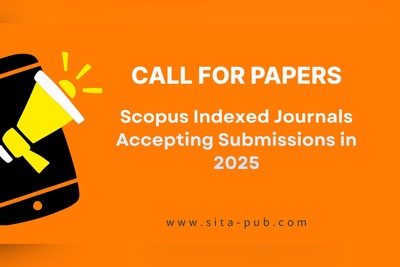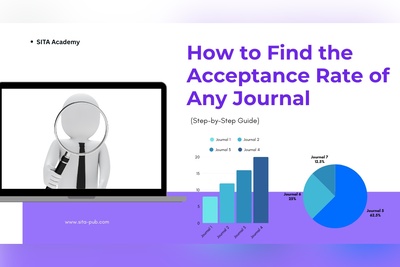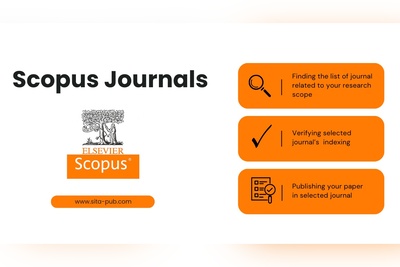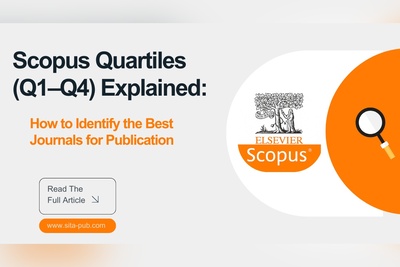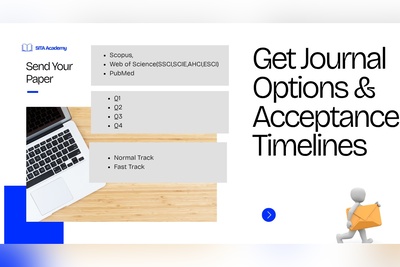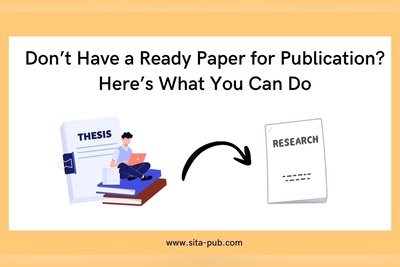Get Published Faster: Journals with 90%+ Acceptance Probability for Your Research
Looking to publish faster? Discover Scopus and Web of Science journals with 90%+ acceptance probability. Learn how to identify reputable high-acceptance journals and avoid predatory outlets.
- Why Acceptance Probability Matters
- Factors Influencing Acceptance Probability
- Types of Journals with Higher Acceptance Rates
- Practical Strategies to Reach 90%+ Acceptance Probability
- Are 90%+ Acceptance Journals Always Reputable?
- How SITA Academy Helps with High-Probability Journals
- Benefits of Targeting 90%+ Acceptance Journals
- Tips to Avoid Predatory Journals While Seeking High Acceptance
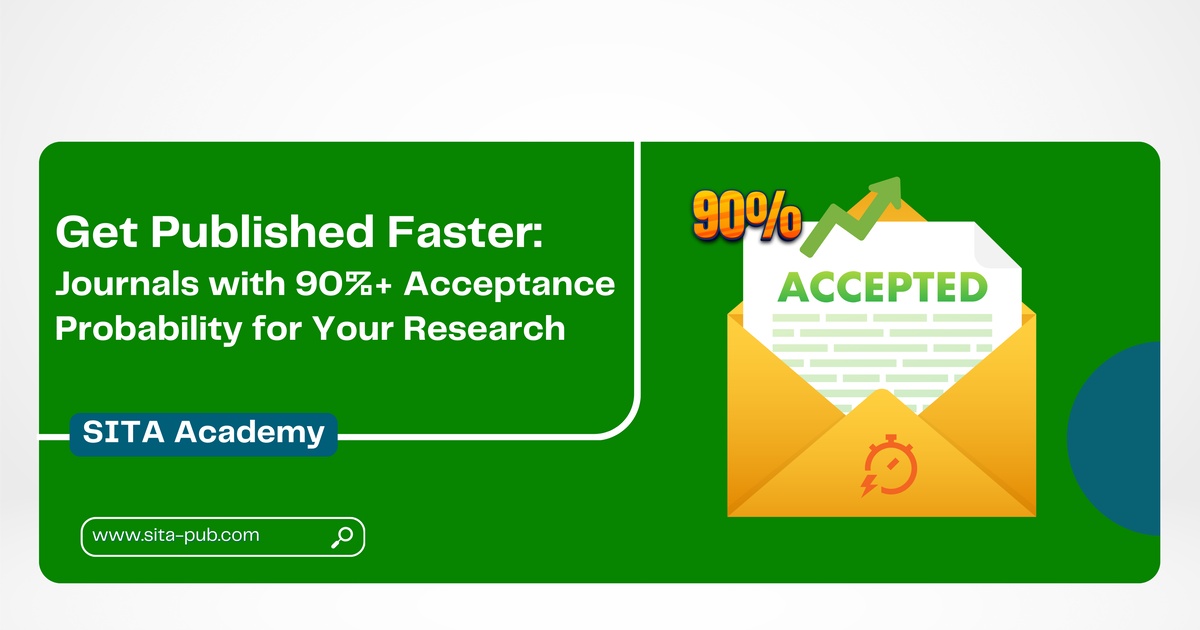
The journey from submission to publication is often long, uncertain, and filled with rejections. Many researchers spend months, or even years, trying to publish in journals that are either unsuitable for their work or too competitive.
But what if you could identify journals where your paper has a 90% or higher acceptance probability? This approach could significantly reduce time, effort, and stress, helping you get your work published faster and with more confidence.
In this article, we will explore:
Why acceptance probability matters.
Factors that influence your chances of acceptance.
Types of journals with higher acceptance rates.
Practical strategies to increase your acceptance probability.
How SITA Academy can help match your paper to the right journals with over 90% probability.
1. Why Acceptance Probability Matters

Publishing in academic journals is not just about visibility—it directly impacts:
Academic progression: Faculty promotions, tenure, and PhD graduation often depend on Scopus- or Web of Science–indexed publications.
Research credibility: Acceptance in a reputable journal enhances the trustworthiness of your work.
Funding opportunities: Agencies prefer researchers with strong publication records.
Career growth: Whether you are applying for postdoctoral positions or international opportunities, publications matter.
The problem? Many journals, especially top-tier Q1 and Q2 journals, have very low acceptance rates (10–20%), making them highly competitive. For early-career researchers, this can be discouraging.
That’s why finding journals with a 90%+ acceptance probability—while still maintaining reputation and indexing—can be a game changer.
2. Factors Influencing Acceptance Probability

A journal’s acceptance rate depends on multiple factors:
Scope and Relevance
Submitting to journals that align perfectly with your paper’s subject area increases chances.
A mismatch in scope is one of the most common reasons for rejection.
Journal Tier
Q1 journals (top 25%) have very low acceptance rates.
Q3 and Q4 journals often accept more papers, especially if your work is technically sound.
Manuscript Quality
Well-written, plagiarism-free, properly formatted papers have much higher acceptance probability.
Journal Model
Open access journals often have higher acceptance rates since they are funded by Article Processing Charges (APCs).
Subscription-based journals may be more selective, as they rely on citations and readership.
Editorial and Peer-Review Speed
Some journals are known for fast review processes and higher acceptance rates.
By analyzing these factors, researchers can strategically target journals with higher acceptance probability.
3. Types of Journals with Higher Acceptance Rates
Not all journals are equally competitive. Below are categories where you can expect higher acceptance probability (sometimes reaching 90% or more if your paper is well-prepared):
a) Q3 and Q4 Scopus Journals
These journals represent the lower quartiles in their field.
They are indexed (so they are reputable) but have lower competition compared to Q1/Q2.
Good option for researchers prioritizing faster publication over prestige.
b) Emerging Journals in Scopus or Web of Science
Newer journals often accept more papers to build their reputation and citation base.
Still reliable as long as they are officially indexed.
c) Open Access Journals with APCs
Journals funded by Article Processing Charges usually have higher acceptance rates.
As long as the paper meets basic standards, rejection rates are lower compared to subscription-only journals.
d) Niche or Specialized Journals
Journals focusing on very specific areas may receive fewer submissions.
If your work directly fits the niche, acceptance probability is high.
4. Practical Strategies to Reach 90%+ Acceptance Probability

Even within the right journal category, your acceptance probability depends on your preparation. Here’s how to maximize it:
Choose the Right Journal
Use tools like Scopus Source List or SJR (SCImago Journal Rank).
Filter by field, quartile, and indexing status.
Match Journal Scope
Read recent articles from the journal to ensure your paper fits.
Avoid general submissions to journals outside your subject area.
Improve Manuscript Quality
Ensure proper structure (abstract, introduction, methodology, results, discussion).
Use professional editing for grammar and clarity.
Follow Formatting Guidelines
Each journal has strict formatting requirements. Non-compliance leads to desk rejection.
Check Ethical Standards
Run plagiarism checks.
Ensure all references are properly cited.
Target Journals with Faster Review Times
Some journals mention review timelines (e.g., 4–8 weeks).
Choosing these increases your chances of fast publication.
Seek Professional Assistance
Research centers like SITA Academy provide tailored support, ensuring your paper is matched to journals with high acceptance probability.
5. Are 90%+ Acceptance Journals Always Reputable?
A valid concern is whether journals with very high acceptance rates are predatory. The answer: Not necessarily.
Some legitimate Scopus-indexed Q3/Q4 or open access journals do accept most submissions that meet quality standards.
However, researchers must be careful to avoid predatory journals that claim high acceptance but are not indexed.
Always verify indexing on Scopus.com or Clarivate (Web of Science) before submission.
6. How SITA Academy Helps with High-Probability Journals
Finding the right journal with 90%+ acceptance chance requires detailed analysis of both your paper and the journal landscape. At SITA Academy, we provide professional journal selection services:
Manuscript Analysis
We carefully review your paper’s content, novelty, and subject area.
Journal Matching
Using our extensive database of Scopus and Web of Science journals, we match your work with journals where acceptance probability is 90% or higher.
Customized Lists
Based on your budget (APCs) and preferred quartile, we provide a tailored list of suitable journals.
Submission Support
We guide you through formatting, plagiarism checks, and submission to reduce rejection risk.
Transparency
All suggested journals are indexed and verified, ensuring credibility and avoiding predatory outlets.
Step to get started:
Send us your manuscript. We will analyze your paper and provide a list of journals with the highest acceptance chances.
7. Benefits of Targeting 90%+ Acceptance Journals
Faster Publication Timeline: Reduces waiting months or years.
Higher Confidence: Lower risk of rejection saves time and money.
Academic Progress: Helps meet deadlines for graduation, promotions, or project reports.
Better Planning: Knowing APCs and timelines upfront allows proper budgeting.
8. Tips to Avoid Predatory Journals While Seeking High Acceptance
While aiming for journals with high acceptance, always check:
Scopus or Web of Science indexing status.
Publisher reputation (Elsevier, Springer, Wiley, Taylor & Francis, etc.).
DOI assignment and presence in reliable databases.
Peer-review process description on the journal’s website.

Remember: A high acceptance rate should not come at the cost of your research credibility.
Conclusion
Getting published faster is possible when you target Scopus and Web of Science journals with 90%+ acceptance probability. By selecting the right journal tier (Q3/Q4, open access, emerging journals), ensuring manuscript quality, and following submission guidelines, you can maximize your chances.
Verified Contact Channels
If you have any questions, inquiries, or would like to learn more about our services, please don't hesitate to reach out to us. Our dedicated team is ready to assist you.






